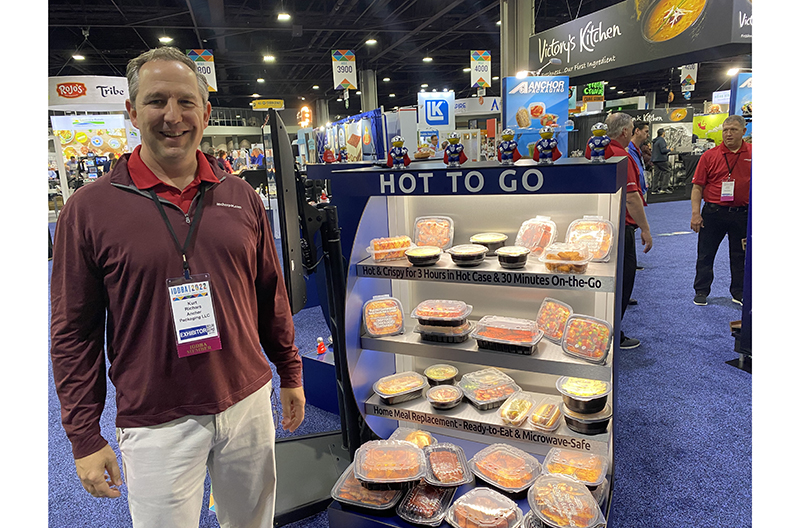The Shelby Report recently talked with Kurt Richars, director of market development and sustainability for St. Louis, Missouri-based Anchor Packaging.
Anchor Packaging is a maker of rigid food packaging and flexible food film.
The company recently acquired Panoramic Inc., a manufacturer of thermoformed products used in fresh food applications, including bakery, produce and confectionery out of Janesville, Wisconsin.
Richars said he joined Anchor Packaging in January 2020. Due to the COVID-19 pandemic, “for me, everything new is new again,” he said.
According to Richars, the big news for Anchor was the introduction of the Panoramic product line. He said Panoramic was bought because of its bakery capabilities and its custom product ability.
“Its smaller footprint allows us to be much more nimble and allows us to develop custom solutions,” Richars explained. “That’s really how Panoramic came up. So we have a lot more custom skills now in PET. And then we also, of course, have the bakery.”
Richars recalled reading that 2015 was the first time 51 cents of the food dollar had moved into restaurants, away from grocery. Then, 2020 was supposed to be the first year that 51 cents of the food dollar spent in the restaurant was going to be spent for meals eaten off premise, away from the restaurant. Of course, the pandemic changed all that.
“I think what we saw was 70-80 plus percent of the food dollar go flying back into grocery…which was already doing an outstanding job of grab-and-go and prepared meals,” he said.
While many people who were working – and cooking – from home have returned to the office, others have returned home again to work after the latest COVID surge.
“The point is that people are at home, and they’re cooking more, and there’s cooking fatigue,” Richars said. “So grab-and-go complements that. If you can have a fully prepared option or you have something to complement a meal you’re already working on, it helps a lot.”
Anchor Packaging tries to share with its customers that “better packaging will create the best food experience.” Richars said there are special things Anchor has done with its packaging lines intentionally to try to create a better experience.
“The crisp food line is specifically designed to keep hot and crisp grab-and-go hot for hours in the hot case…with specially designed vents and raised channels in the bottom. A lot of thinking…went in it to let the hot air roll around inside of the package and evacuate the steam.”
A number of customers had come in and said they had tried the product and couldn’t believe how well it worked. Richars used fried chicken as an example.
“I have had some significant customers come in here and say, ‘I didn’t think it was going to work. I thought it was going to be that lousy experience…flimsy or soggy. I got home and took a bite. We couldn’t believe how crisp it still was,’” he said.
Richars credited polypropylene, which is half of Anchor’s product line, for doing the job of holding heat.
“There’s innovations built into every one of these lines,” he said.
Anchor works with specific accounts on specific solutions. Richars said this product came from a project with a large national burger chain. It saw the need to go off premise years before the pandemic hit. It was looking for a solution that would enable that and keep its fries crispy.
“They went through RFP after RFP, lots and lots of products. When they found that one, we had single size at the time. Now, we have 27 items in the line, but it was born of that project,” he said.
Another large customer had a specific operational challenge, Richars said, and Anchor invented the “ventless vent.” The company prepackages its coleslaw, as well as hot items, and stores them upside down. Anchor’s product provided a better way to do that without spills.
“It’s the little things you build into every one of these that delivers a better experience. And then that’s how you can help a customer…what we sell is the ability for our customer to deliver a great meal,” Richars said.
He added that Anchor also is looking at increasing sustainability. Polypropylene and PET have low carbon footprints, are light on energy and water and are recyclable.
“We can do a better job of trying to improve collection and we are very much working on that,” Richars said. “We are trying to do everything we can to improve collection and help make these more sustainable substrates.”
Richars said Anchor will continue to have the same conversation, “which is, we can help you do a great job of fitting your food with consumers” so they have a great experience. “They’re going to come back and be a repeat customer.”
For more information, visit anchorpackaging.com.

